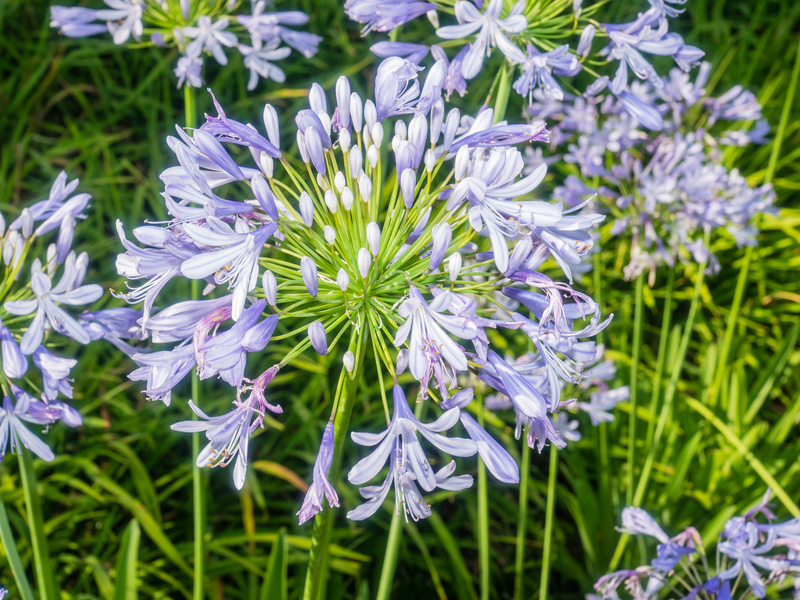Essential Care Tips Every Beginner Needs for a Perfect Lawn
Every homeowner or gardening enthusiast dreams of having a lush, emerald-green expanse that not only looks captivating but also increases property value. Achieving the perfect lawn might seem daunting, especially for beginners, but with the right knowledge and consistent effort, anyone can transform their patchy, weedy yard into a beautiful oasis. In this comprehensive guide, we will explore the essential care tips every beginner needs for a perfect lawn, ensuring your grass thrives year-round.
Understanding Your Lawn: The Foundation of Lawn Care Success
Before diving into specific lawn maintenance tips, it's crucial to understand your lawn's unique requirements. Factors such as grass species, climate, soil type, and sun exposure all influence your lawn's health and care routine. Let's start by identifying the most common elements:
- Grass Type: Know whether you have a warm-season or cool-season grass. Each type requires different care strategies.
- Soil Composition: Test your soil's pH and nutrient levels. Healthy soil is the cornerstone of a perfect lawn.
- Sunlight: Observe how much sun your yard gets. Some grasses thrive in full sun, while others tolerate shade.
- Climate: Adapt your lawn care routine to local weather conditions for best results.
Tip 1: Start With a Soil Test
Performing a soil test is essential for beginners. A basic soil kit will help determine pH and inform you about nutrient deficiencies. Correcting imbalances with lime (to raise pH) or sulfur (to lower pH), as well as appropriate fertilization, sets your grass up for optimal growth and resilience.

Regular Mowing: The Secret to Healthy Grass
One of the most fundamental perfect lawn care tips is proper mowing. Mowing not only keeps your yard neat but also encourages thick, robust grass. Here's how to mow like a pro:
- Never remove more than one-third of the grass blade in a single mowing.
- Keep mower blades sharp to prevent tearing the grass, which can invite disease.
- Alter mowing patterns regularly to prevent soil compaction and ruts.
- Mow when grass is dry to achieve a clean cut and avoid clumping.
Choosing the Right Grass Height
Grass height matters! Cool-season grasses (like fescue and bluegrass) should be kept at 2.5 to 4 inches, while warm-season varieties (such as Bermuda and Zoysia) prefer 1 to 2 inches. Adjust your mower's height accordingly to the grass variety and time of year.
Watering for a Lush, Green Lawn
Watering your lawn correctly is another essential lawn care tip for beginners. Over or under-watering can compromise grass health, making it susceptible to weeds, pests, and disease.
Tip 2: Water Deeply but Infrequently
- Apply 1 to 1.5 inches of water per week, including rainfall. This encourages deep root growth, resulting in more drought-tolerant grass.
- Water early in the morning (between 5 and 9 a.m.) to reduce water loss from evaporation and fungal issues.
- Avoid frequent, shallow watering, which encourages weak roots and increases susceptibility to heat and drought.
- Observe signs of thirst: Footprints that linger, or a dull bluish-green color can signal your lawn needs hydration.
Feeding Your Lawn: Fertilization Fundamentals
Just like any other living thing, your grass requires nutrients to thrive. Fertilization is an essential step in achieving a perfect lawn. Here's how to do it right:
- Use a balanced fertilizer, ideally one tailored for your grass type and local soil pH.
- Apply the right amount at the right time: Too much fertilizer can burn your lawn; too little won't produce results.
- For cool-season grass, fertilize in early spring and fall. For warm-season grass, feed it in late spring through summer.
- Slow-release fertilizers provide nutrients over time, reducing the risk of burning and promoting steady growth.
Natural vs. Synthetic Fertilizers
Organic fertilizers, like compost or manure, release nutrients gradually and improve soil health. Synthetic options work faster but require careful application. For beginners, organic fertilizers are generally safer and better for building sustainable lawn vitality.
Dealing With Weeds: Prevention and Control Strategies
Weeds are the bane of any aspiring lawn master. Prevention is the most effective method, but even well-maintained lawns occasionally suffer weed invasions. Here are the best weed management tips:
- Maintain a thick lawn: Dense grass crowds out potential weed seedlings.
- Hand-pull weeds when the soil is moist to remove the root system.
- Use pre-emergent herbicides in early spring to stop annual weeds (like crabgrass) before they sprout.
- Spot-treat existing weeds with post-emergent herbicides designed for your grass type. Always follow label directions.
Addressing Lawn Pests and Diseases
Pests and diseases can quickly ruin your hard work if not detected and managed early. Know the signs:
- Brown patches or rings may indicate fungal diseases.
- Wilting, chewed grass, or tunnels suggest insect activity, like grubs or chinch bugs.
- Consult local extension services for pest identification and use eco-friendly treatments when possible.
Tip 3: Encourage Beneficial Insects
Ladybugs, ground beetles, and certain nematodes can help keep pest populations under control. Avoid overusing pesticides, as they may harm helpful organisms in your lawn's ecosystem.
Seasonal Lawn Care Tips for Beginners
Your lawn care routine should adapt to changing seasons. Here's a seasonal breakdown of essential care for a perfect lawn:
Spring Lawn Care
- Rake lawn thoroughly to remove dead leaves and debris.
- Aerate or dethatch to relieve compaction and enhance nutrient uptake.
- Apply pre-emergent weed control and feed cool-season grasses.
Summer Lawn Care
- Raise mowing height to shade soil and retain moisture.
- Water deeply and efficiently.
- Address pests or fungus promptly.
Fall Lawn Care
- Apply fall fertilizer for cool-season grasses to promote root growth.
- Reseed thin or bare areas.
- Keep mowing until growth slows.
Winter Lawn Care
- Limit foot traffic on dormant grass to prevent damage.
- Clear leaves and debris that can smother grass.
- Service your mower and other equipment in preparation for spring.
Overseeding and Aeration: Boosting Lawn Density
Overseeding is the process of spreading fresh grass seed over an existing lawn. This is especially beneficial for thinning, patchy lawns. Aeration involves creating small holes in the soil to improve air, water, and nutrient penetration.
Tip 4: Schedule Aeration and Overseeding
- Aerate your lawn at least once a year, ideally in the fall for cool-season or late spring for warm-season grasses.
- Follow aeration immediately with overseeding on established lawns to improve thickness and reduce weed problems.
- Keep seeds moist until grass is established.
Common Beginner Lawn Care Mistakes (and How to Avoid Them)
Even well-intentioned gardeners make mistakes. Avoid these frequent pitfalls:
- Cutting grass too short ("scalping") exposes soil and stresses roots.
- Applying too much fertilizer can burn lawns and encourage excessive, weak growth.
- Watering too frequently creates shallow roots and vulnerable grass.
- Ignoring soil health limits your lawn's long-term success.
- Neglecting weed and pest control lets problems escalate.

The Benefits of Routine Lawn Care
Maintaining a perfect lawn isn't just about aesthetics. There are numerous practical and environmental advantages:
- Enhanced curb appeal increases property value.
- Reduces soil erosion and improves water filtration.
- Provides a safe, comfortable play area for children and pets.
- Improves local air quality by trapping dust and pollutants.
- Supports ecosystem biodiversity when managed naturally and sustainably.
Conclusion: Achieving the Perfect Lawn Is Within Reach
With knowledge, patience, and consistent effort, every beginner can master essential lawn care practices and enjoy a thick, vigorous, and green lawn for years to come. By following these essential care tips for a perfect lawn--from proper mowing and watering to fertilizing, aeration, and integrated pest management--you will create a resilient, beautiful yard that stands out in your neighborhood.
Remember that lawn perfection is a journey, not just a destination. Monitor your progress, learn from your experiences, and never hesitate to seek advice from local gardening experts. Your journey toward the perfect lawn starts today!
Ready to Get Started?
Apply these beginner-friendly tips, observe the changes, and enjoy the benefits of a well-cared-for lawn. Don't forget--consistency is the key to a beautiful, healthy, and perfect lawn!